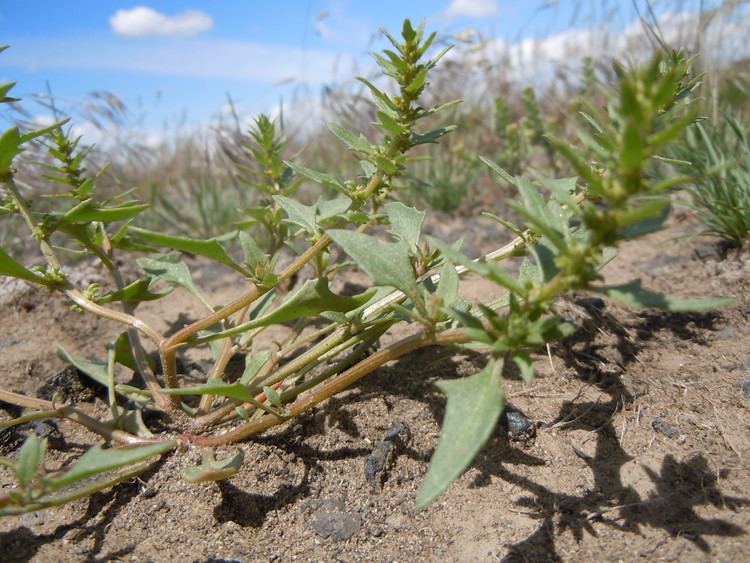Tribe Anserineae Rank Genus | Scientific name Monolepis | |
 | ||
Lower classifications Blitum bonus‑henricus, Blitum nuttallianum, Micromonolepis | ||
Kleine majer amaranthus blitum syn amaranthus lividus 2016 09 14
Blitum is a flowering plant genus from the subfamily Chenopodioideae in the Amaranthaceae family. It is closely related to genus Spinacia. Its 12 species were traditionally grouped into genera Chenopodium, Monolepis, or Scleroblitum. The species of genus Blitum occur in Asia, Europe, North Africa, the Americas, and Australia.
Contents
- Kleine majer amaranthus blitum syn amaranthus lividus 2016 09 14
- Description
- Systematics and Distribution
- References
Description
The species in genus Blitum are non-aromatic annual or perennial herbs. They are glabrous, or sometimes covered with stipitate vesicular hairs, young plants may be sticky. From the base emerge several erect, ascending or prostrate stems, that are unbranched or sparsely branched.
The alternate leaves consist of a petiole and a simple blade. The basal leaves are often long-petiolate and forming a rosette. The leaf blade is thin oder slightly fleshy, and may be triangular, triangular-hastate, triangular-lanceolate, or spathulate, with entire to dentate margins.
The inflorescences consist of spicately arranged compact glomerules of flowers, ebracteate or in the axils of small leaf-like bracts. Flowers are bisexual or pistillate. They contain (1) 3-5 herbaceous, unkeeled perianth segments, connate only at base or nearly to the middle, sometimes missing; a circle of 1-5 stamens; and an ovary with 2-4 stigmas.
In fruit, the perianth becomes either succulent or dry and hard. The pericarp is membranous and usually adhering to the vertically orientated, broadly ovate to orbicular seed. The seed coat is dark brown to black, its surface can be dull, almost smooth, slightly striate, rugulose, or reticulate.
Systematics and Distribution
The genus Blitum was first described in 1753 by Carolus Linnaeus in Species Plantarum, Vol. 2, p. 4. Type species is Blitum capitatum L. Since the second half of the 19th century, Blitum species were grouped into genus Chenopodium and treated as a subgenus, Chenopodium subgenus Blitum. Phylogenetic research revealed, that these species, as well as species of Monolepis and Scleroblitum, are more closely related to Spinacia, and do not really belong to Chenopodium. Therefore Fuentes-Bazan et al. (2012) separated them as own genus Blitum. Together with Spinacia, the genus Blitum was grouped into tribe Anserineae (Syn. Spinacieae).
According to Fuentes-Bazan (2012), Blitum consists of 12 species:
